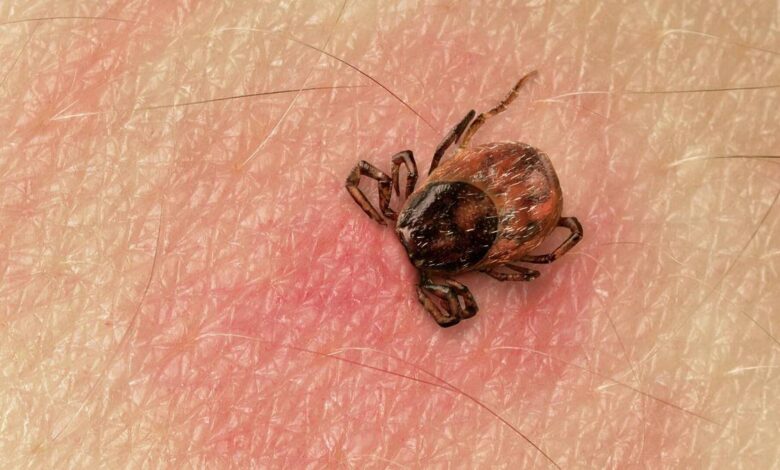Human erlihioz: What's it, causes, symptoms, diagnostics, treatment, prevention

Ehrlichiosis
What is erlihioz?
Erlihioz is a dangerous infection, which is transmitted through a tick bite. Erlihioz can be cured with medication, However, without proper treatment the disease can be fatal.
Causes ehrlichiosis
Cause of ehrlichiosis are bacteria, that are transmitted through a tick bite, in particular, Amblyomma americanum (tick the "Lone Star"), Deer Tick and mite dogs.
Risk factors for ehrlichiosis
Being in the area of distribution of mites increases the risk of infection èrlihiozom. Space distribution of mites include open areas with tall grass or bushes. Not all tick bites lead to infection.
The risk of severe infection is increased in people with weakened immune systems, patients with diseases such as HIV or cancer.
Erlihioz in humans symptoms
Symptoms of ehrlichiosis may appear through 1-2 weeks after infection. The first symptoms often flu-like, and may include:
- Fever;
- Chills;
- Muscle and joint pain;
- Nausea and loss of appetite;
- Headache;
- Fatigue.
Sometimes you may see:
- Stiff neck;
- Confusion.
Some patients develop a rash.
Lack of treatment can cause difficulty in breathing and bleeding.
Diagnosis of ehrlichiosis
The doctor will ask about your symptoms and medical history, and perform a physical exam. You may not know, that you are bitten by a tick. If you were in the area of possible spread of ticks, tell your doctor.
It can be assigned to a blood test, that:
- Confirm the presence of ehrlichiosis;
- Look for any other infection, that can go from mite;
- Look for signs of damage to internal organs.
Treatment for ehrlichiosis
Erlihioz can be successfully treated with antibiotics.
Other medications are used, to relieve symptoms, until the infection is in the body. Complete cure of ehrlichiosis may take several weeks.
Prevention of ehrlichiosis
Avoid tick bites is the best way to prevent erlihioz. Find Out, When ticks are most active in the area of your residence. At this time, avoid walking in the tall grass, Woods and bushes. If you are in places spread mites:
- Wear light-colored clothes, Since it is easier to see the tick;
- Wear long pants and socks. Tuck pants into socks, to prevent the ingress of ticks on the skin of the feet;
- Use repellents, that contain DEET.
After staying outdoors:
- Carefully check themselves and their pets for the presence of mites;
- Quickly remove ticks, If you find them;
- If a tick is attached to the skin, you need to remove it as soon as possible. This can be done with tweezers. Wash area, where the tick has been attached, with SOAP and water.
Not all tick bites cause infection. If you have been bitten by a mite, inspect the bite area over the next few days. Consult your doctor, When you experience any symptoms of infection.
